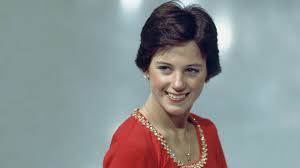In the shimmering world of figure skating, where artistry meets athleticism, few figures loom as large as Dorothy Hamill. Crowned Olympic champion in 1976, Hamill wasn’t just a skater she became a national icon and a transformative figure in her sport. With her flowing hair, fluid movements, and disarming charm, she didn’t just win competitions she won hearts, changed perceptions, and helped define what modern figure skating could be.
The Rise of a Champion
Born on July 26, 1956, in Chicago and raised in Greenwich, Connecticut, Dorothy Hamill took to the ice at a young age. Her dedication was apparent early on, training rigorously under some of the best coaches of the time. What set Hamill apart wasn’t just her talent it was her work ethic, her stage presence, and a natural musicality that elevated every routine she performed.
Her breakout moment came during the 1976 Winter Olympics in Innsbruck, Austria, where the world watched her deliver a flawless performance. With a winning combination of elegance, control, and innovative choreography, she claimed the gold medal, becoming the face of American figure skating overnight.
Changing the Sport with Style and Skill
While Hamill’s Olympic win was historic, her true impact was more profound. She introduced a style that was both balletic and athletic fusing grace with power in a way that hadn’t been widely seen before. Her routines were notable for their clean lines, expressive artistry, and technical complexity qualities that would become essential for future competitors.
Hamill also made a mark with her signature move: the “Hamill camel.” This innovative spin starting as a camel spin and transitioning into a sit spin became a staple in figure skating choreography and is still practiced by elite skaters today. It was a subtle but revolutionary contribution, showcasing how creativity in transitions could elevate a routine.
And of course, who could forget the “Hamill wedge” her iconic short haircut that sparked a nationwide trend. It wasn’t just a style statement; it symbolized a fresh, confident, modern image of female athletes that resonated beyond the rink.
A Cultural Phenomenon
Hamill’s popularity helped launch figure skating into the American mainstream. In the late 1970s and ’80s, the sport became a television spectacle, and Hamill was its undisputed star. She transitioned seamlessly into professional skating, becoming a headliner for Ice Capades and later producing her own skating shows. Her presence brought glamour, commercial appeal, and a sense of narrative storytelling to skating exhibitions, paving the way for later stars like Kristi Yamaguchi and Michelle Kwan.
Her appeal wasn’t confined to the ice. Hamill appeared in commercials, interviews, and television specials, and became a symbol of American grace and perseverance during a time of great cultural and political change. She made figure skating not just a sport, but an entertainment spectacle.
Personal Challenges and Resilience
Behind the scenes, Hamill’s journey wasn’t without its struggles. She has spoken openly about her battles with depression and the pressures of fame. In her candid memoir, A Skating Life, she reflects on the emotional toll of competition and the realities of life after Olympic glory. Her honesty has endeared her to fans even more, presenting a fuller picture of an athlete who remained resilient in both triumph and hardship.
By speaking out about mental health, Hamill has played a role in normalizing conversations around emotional well-being in sports, long before it became a widespread movement.
A Lasting Legacy
Today, Dorothy Hamill’s legacy continues to inspire. Her impact on figure skating is still evident in the performances of modern champions who emphasize not only technical ability but also expressive storytelling. Her combination of poise, innovation, and sheer star power helped elevate the sport to new artistic and commercial heights.
Whether it’s a young skater learning their first spin or a fan reminiscing about the golden age of Olympic figure skating, Dorothy Hamill’s influence endures. She didn’t just skate she carved her name into the history of sport with every glide across the ice.

